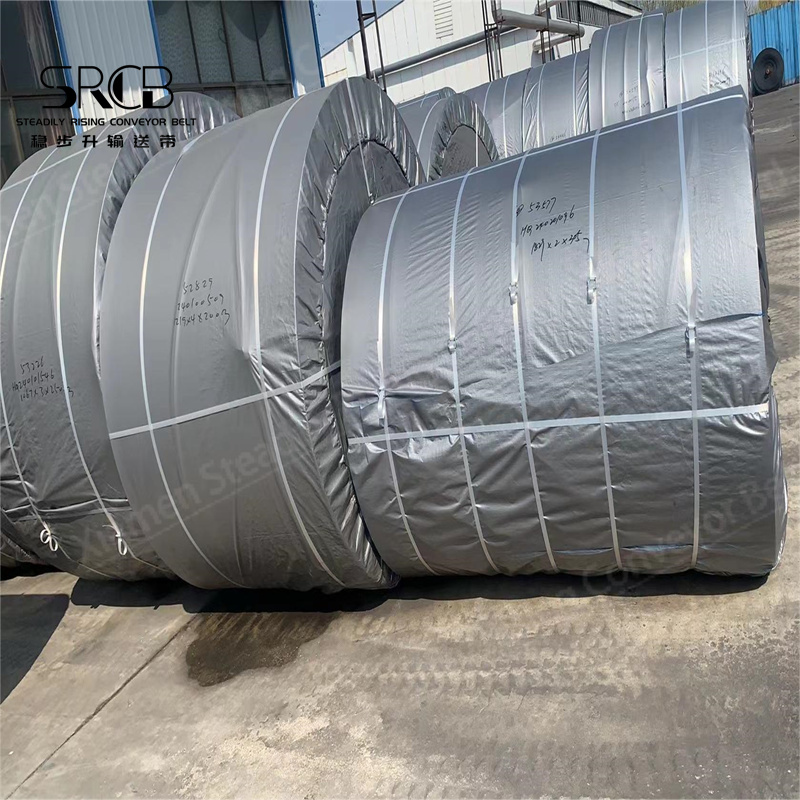
The storage conditions of the heat resistant conveyor belt
2024-04-18 00:59In October of the previous year, our company shipped a 26-meter heat-resistant conveyor belt with a bandwidth of 1000mm to a mine in Australia for the transportation of high-temperature ore.
The heat-resistant conveyor belt is made of multi-layer rubber cotton canvas (polyester cotton cloth) or polyester canvas covered with high temperature resistant or heat-resistant rubber, and is vulcanized and bonded together at high temperature. It is suitable for conveying hot coke below 175℃. Cement, slag and hot castings, etc.
It is mainly used in metallurgy, construction and other industries to transport high-temperature materials such as sinter, coke, cement clinker, etc. The material temperature does not exceed 800°C and the belt surface temperature does not exceed 220°C.
When the heat resistant conveyor belt is conveying and storage should be clean, prevent them from the sunlight or soaking in the rain and snow directly, prevent from contacting with acid and alkali, oil, organic solvent and substances. And keep the 1 meter away from the heating equipment. The temperature in the storage warehouse should be kept at 18-40℃, the relative humidity should be maintained at 50-80%. During the storage time, the conveyor belt should be placed in a roll and should not be folded, conveyor belt should be rotated once a quarter.
Different types, specification layer of conveyor belt should not be connected together, its joint should be bonded by blue. The type, structure, scale, layer of the conveyor belt should be selected according to the using condition. The operation speed of conveyor belt generally less than 2.5m/s. For materials with larger lumps and large wear and when using the fixed unloading devices the speed should be used as slow as possible. According the regulation design of the conveyor, the relationship between conveyor drive roller and the conveyor belt cloth layer, the matching of the drive roller and the reversing roller and the requirements of the roller groove angle are reasonably selected.
The feeding direction should along the running direction of conveyor belt. In order to reduce the impact of the falling materials to the conveyor belt, a chute should be used to reduce the blanking distances. The feeding section of the conveyor belt should be shorten the distance between rollers and use buffer rollers as leakage materials. The belt should use soft and moderate baffles to prevent the baffles from being too hard and scratching the belt surface of the conveyor belt. The main raw materials of the conveyor belt thermal vulcanization rubber joint are RIT core rubber, RIT surface rubber and its thermal vulcanization agent SK823.
RIT core glue is used to fill the inner layer and gaps of hot vulcanization rubber connectors. It features high temperature resistance and bonding compressive strength. It increases the viscosity of vulcanized rubber and the bonding compressive strength of conveyor belts. RIT surface glue is used on the surface around the conveyor belt. Unlike core rubber surface glue attaches great importance to compressive strength and can ensure that the joint position will not be damaged under high load. The vulcanized rubber can further enhance the position of the conveyor belt. The ability of impact resistance and corrosion resistance makes the bearing material transportation more reasonable.
Thermal curing agent SK823 is used fir kneading and bonding conveyor belt and core glue, it has the advantages of strong adhesion, non-flammability and hydrophilicity. It can improve the bonding of vulcanized rubber relay seats between core rubber, surface rubber and conveyor belt. Therefore, achieving better bonding effect. Select matching hot vulcanized rubber raw materials according to the materials of the conveyor belt to ensure the bonding strength of the conveyor belt position.

